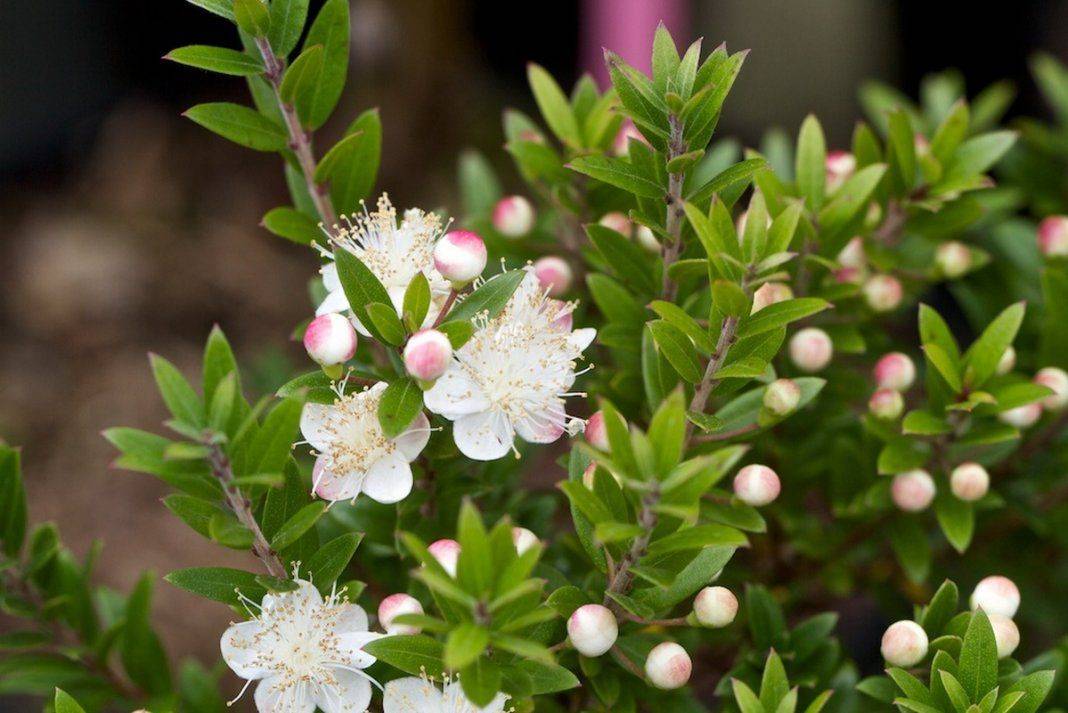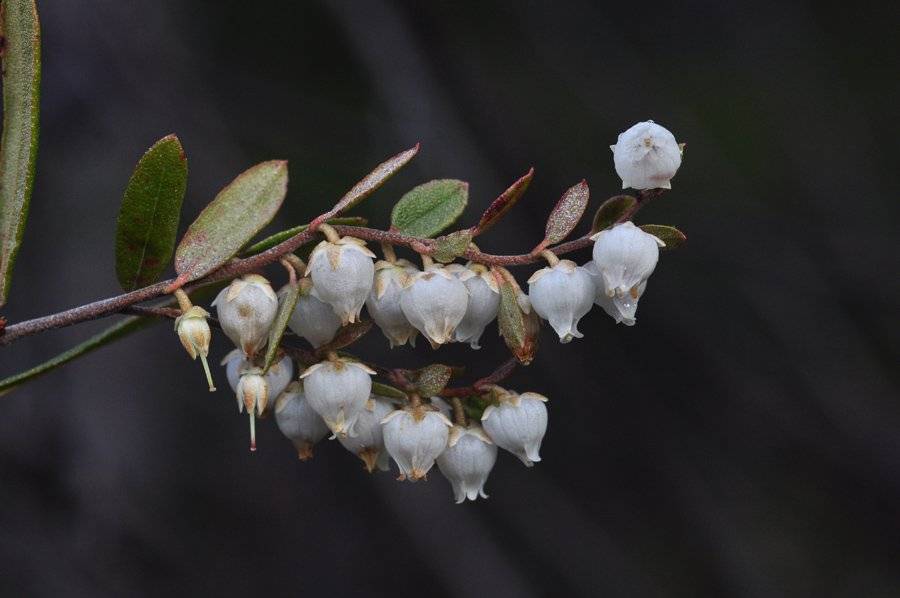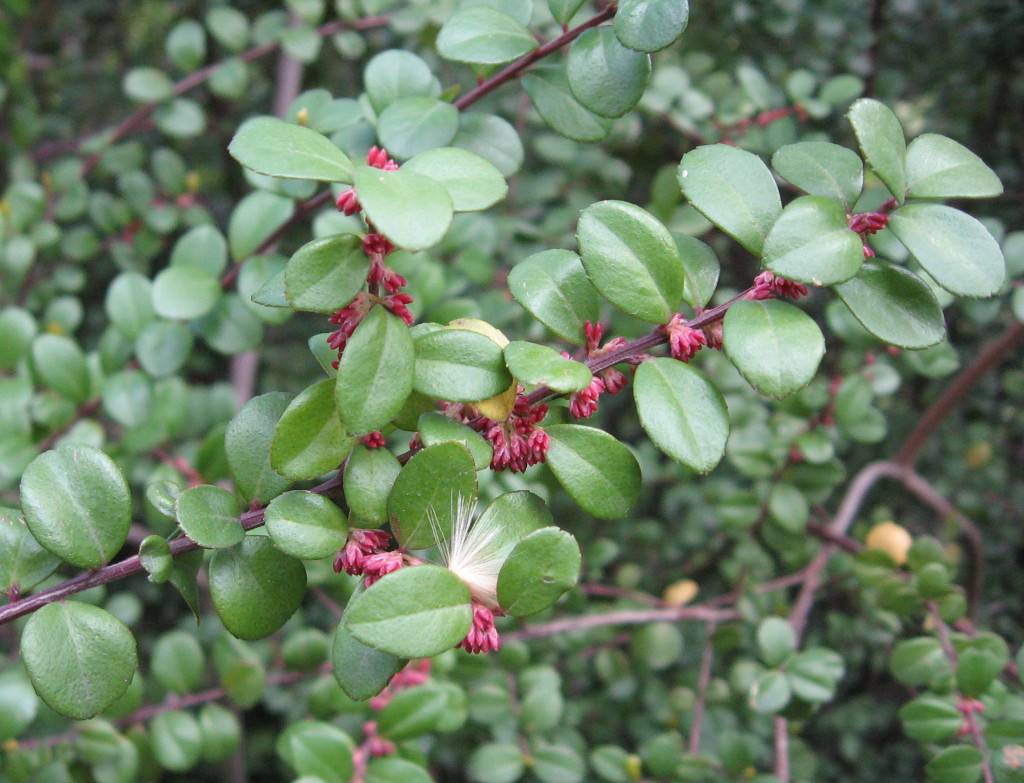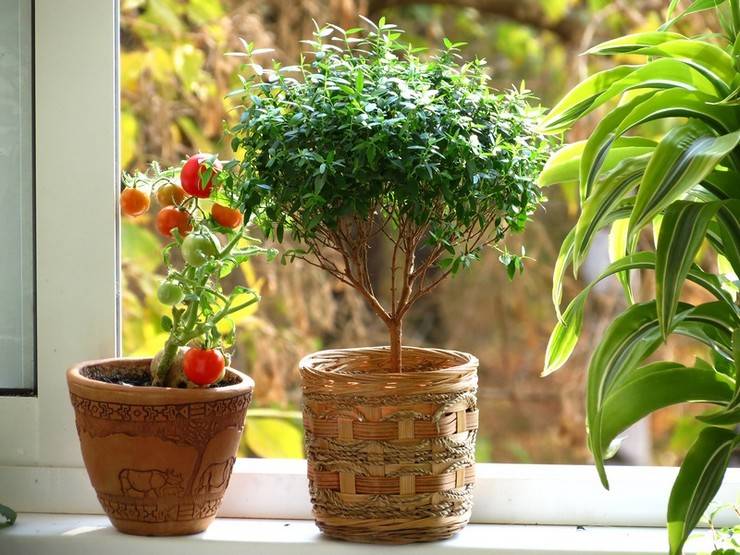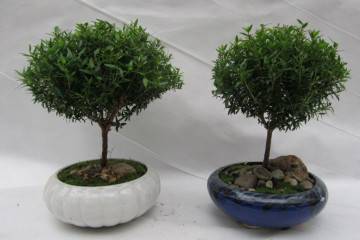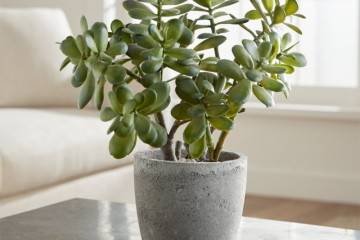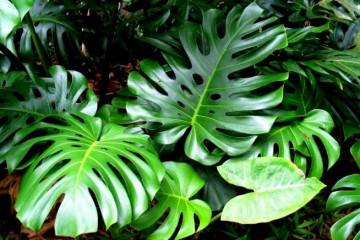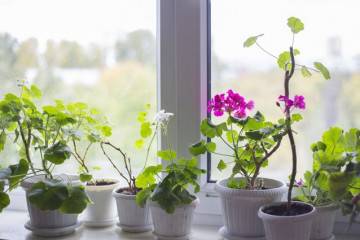Myrtle tree - how useful is myrtle in an apartment
Content:
An amazing plant native to the Mediterranean, the myrtle tree is used to decorate gardens and homes. There are more than a hundred species of plants, they are characterized by beautiful and fragrant flowers, the presence of fruits. And this tree is also the hero of many legends. According to one of them, Adam brought myrtle to earth - he took a small twig when he was expelled from paradise.
The origin and appearance of the myrtle tree
Myrtle got its name not by accident: in the Greek language the word "myrtle" means "incense" or "balm". The myrtle tree contains a large amount of essential oil, which is used in medicine and cosmetology.
The native land of the tree is the Mediterranean. Wild varieties can be found in the following countries:
- France;
- Italy;
- North Africa;
- Greece.
The tree is quite thermophilic, and therefore it can winter only in warm regions. In the middle lane or Siberia, it can only be grown as a bonsai houseplant.
The plant belongs to the Myrtaceae family - like eucalyptus, clove and tea trees, guava and feijoa. It is characterized by slow development: on average, the annual growth does not exceed fifteen centimeters. The height of an adult specimen in the wild is about five meters.
Myrtle is an evergreen plant. Its leaves are whole, oppositely arranged. The color of the leaf plates is emerald; on the surface, thin veins are clearly visible, which contain the essential oil, which has an amazing aroma.
Myrtle flower descriptions
Myrtle flowers are small, consist of five boiling white petals and golden stamens. The flowers are collected in short inflorescences, sometimes they grow singly, sometimes they form bunches. In the fall, when the plant fades, fruits appear on it. They are usually dark blue, but there are varieties with white and yellowish fruits. Inside them are seeds that have an irregular shape - from these seeds you can grow a myrtle tree.
Types and varieties of myrtle tree
Experts count up to 100 plant varieties. Most of them are grown in various botanical gardens around the world. Florists most often use common myrtle for growing at home - the most unpretentious type. The plant fell in love with its unique aroma, decorative, medicinal qualities.
Swamp myrtle (Calyculata)
Marsh myrtle is a low, up to one meter, shrub with a spreading evergreen crown and straight stems. Small leaves and racemose inflorescences of a white tone grow on short roots. Both the leaves and the shoots of the plant are poisonous.
The main feature of this species is frost resistance, thanks to which it tolerates even cold winters perfectly.Under natural conditions, it is most often found in sphagnum bogs. The average duration of the marsh myrtle is 45-50 years.
Variegated myrtle (Variegata)
The variegated myrtle tree differs from other species by its original variegated leaves: they have amber streaks, the edges are bordered with small specks. The brightness of the spots depends on the level of illumination of the place where the myrtle grows. The plant feels equally good both indoors and outdoors. The flowers can be snow-white or light beige, the stamens are bright, golden.
Myrtle Hymen
Myrtle Hymen is an evergreen shrub. It got its name in honor of the ancient Greek god of marriage Hymen. You can often hear another name for the plant - Bride's Happiness.
Under natural conditions, Hymen can grow up to five meters; in indoor rooms, their height rarely exceeds 100 centimeters. Leaves are emerald, small, lanceolate.
Lemon myrtle
It owes its name to its rich lemon scent. The plant is used in cooking - on its basis, original sauces, drinks, syrups and dressings are obtained. The dried leaves can be used as a seasoning. In the wild, the plant can be found in Australia - in the tropical part of the mainland.
Myrtle communis or ordinary (Communis)
One of the most decorative species of this marvelous plant can be found in the dense evergreen forests of the Mediterranean. Kommunis is a compact evergreen tree, the height of which does not exceed five meters. Stems are tetrahedral, leaves are oblong, solitary. The myrtle tree blooms with snow-white flowers with a pronounced aroma.
Large-leaved myrtle
The maximum height of large-leaved myrtle is 4 meters. On its four-sided stems are smooth, shiny five-centimeter leaves. Long pedicels are crowned with small snow-white flowers, each of which consists of five petals. The core of the flowers is decorated with symmetrical golden stamens.
Myrtle Alhambra
The decorative characteristics of this variety are incredibly high. Florists love the plant because it is great for both outdoor cultivation and bonsai formation. The plant thrives on well-lit areas.
Myrtle begins to bloom in spring - its branches are covered with a large number of snow-white flowers with a bright aroma. The main difference between this myrtle and the rest is that the seed pods are not blue or blue, but white.
Myrtle Tarentina (Tarentina)
This is a dwarf variety of common myrtle. The plant is small-leaved - leaf plates rarely grow more than one and a half centimeters in length. The edges of the leaves are serrated. The plant blooms profusely, the white flowers are small and incredibly fragrant.
In open ground, such a plant can reach five meters, and myrtle - an indoor flower - does not grow more than one meter. Does not require special care: you only need good lighting, regular spraying and watering.
African myrtle
Experts say this plant has nothing to do with the Myrtle family. What is African myrtle? This is a representative of the Mirsinov family, which has a certain resemblance to myrtle. However, there are a number of differences - for example, its leaves and flowers, upon close examination, are very different. The name of this double is African Mirsina, as the name implies, it grows on the Black Continent.
Transplanting myrtle after buying into a pot
For any plant, changing the environment and conditions of maintenance becomes a great stress. That is why, in the first two weeks, you cannot transplant myrtle from one pot to another. The plant needs quarantine for 14 days. During this time, the grower must treat the tree with a pesticide, adjust the watering and spraying regime.
It is necessary to transplant a young plant earlier than two weeks later if it was purchased in a shipping container in which flower development is impossible, or if the soil contains harmful impurities and does not meet the requirements of myrtle.
What is needed for landing
The size of the new pot should match the size of the root ball. Before the transplanting procedure, it is necessary to prepare the soil: a mixture purchased in a store or prepared by yourself will do.
There may be several options:
- one part of turf, humus and half of a part of peat land and sand;
- two parts of turf, clay soil, humus and one part of sand.
Ordinary greenhouse soil is also suitable for a young plant. Drainage must be laid out at the bottom of the pot - expanded clay or perlite will do.
How to choose the best place
A tree needs a lot of light - if there is a lack of it, the leaves fade, the stems stretch out. However, direct sunlight can cause the sheets to turn yellow and curl. If the plant is planned to be grown indoors, it should be placed on the western or eastern windows.
Step-by-step planting process
Three days before planting, the soil should be stopped moistening - when the root ball dries up, it will be easier to remove the plant from the container. The process is pretty simple:
- Gently remove the plant from the container.
- Remove soil from roots.
- Trim those roots that are mechanically damaged, dry or tangled.
- Place drainage on the bottom of the pot.
- Pour three centimeters of soil on top.
- Place the seedling and cover it with soil, compacting it around the trunk with careful movements.
- Moisten the soil, and after half an hour, drain the excess water from the pan.
Reproduction of myrtle
You can propagate myrtle using cuttings or seeds. The first method is preferable, because when propagated by seeds, a new plant may lose varietal characteristics.
Propagation by cuttings
Either in July or in January-February, you need to select several young cuttings, the length of which does not exceed 6-9 centimeters. They should be carefully cut, the lower leaves removed. Treat the cut sites with any root growth stimulant. Plant the cuttings in a container, moisten the soil, remove to a dark place. After a month, young plants can be planted in separate pots.
Growing from seeds
For propagation of myrtle by means of seeds, a mixture of peat and sand is suitable - both components must be taken in equal quantities. Pour the soil into a shallow container, treat with a fungicide solution, and then spread the seeds over the surface. Sprinkle on top with a thin layer of the same mixture, cover with foil or glass.
It is important to water and ventilate crops as needed. The first shoots will appear in 7-14 days. When two true leaves are formed on them, they can be seated in separate pots.
Myrtle care
Myrtle is a houseplant that is easy to care for. In order to create favorable conditions for him, you should take care of a sufficient level of illumination and humidity, and timely introduce nutrients.
Watering mode
A tree needs a lot of water in spring, summer and autumn - as soon as the top layer of the earth dries up, it needs to be watered. The number of irrigations and the volume of water in winter can be reduced, but the soil must not be allowed to dry out. The water should be soft, best if it has stood for 24 hours.
Top dressing
Caring for a myrtle flower at home includes top dressing. Throughout the growing season - from early spring to autumn - the plant should be fertilized once every seven days. For this, complex mineral compositions are suitable. For abundant flowering, phosphorus is required. To accelerate the growth of a tree, you cannot do without fertilizing with nitrogen.
Features of care during the flowering period
A florist needs to know how to care for myrtle while it is in bloom. It is not worth pruning the plant, but adding nutrient mixtures with phosphorus will help it look better. Throughout the entire flowering period, the frequency of watering and spraying should be increased.
Features of care during the rest period
When the plant has faded, it must be moved to a cool place with plenty of light. Speaking about what a tree needs, it is worth saying that caring for indoor myrtle must be watered no more than once a week - you need to make sure that the soil does not dry out. Fertilizers can be not applied at all - or applied once every five weeks.
Preparing for winter
In winter, caring for a tree that has not turned three years old is no different from the usual - the plant needs to be watered, kept in a warm place, and fertilized. But the older specimens should be prepared for the onset of the dormant period:
- gradually reduce the room temperature;
- reduce the amount of watering;
- limit spraying.
How to prune myrtle correctly
Pruning will allow you to form a beautiful and neat crown. It should be carried out at the very beginning of spring or after the flowering period is over. In summer, only a few interfering shoots can be removed.
Home myrtle is an amazing plant: it has a lot of magical properties and useful qualities, our ancestors called it the tree of youth and rebirth. In addition, it responds very gratefully to care and pleases with a fragrance, a bright crown and delicate flowers.

